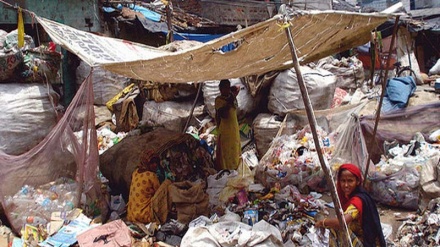We only have one planet to live on (16)
Today, we study the impacts and consequences of desertification on the environment and human communities.
In general, desertification is tantamount to a rise in dry ecosystems due to human activities or natural factors. These factors include unprincipled and unsustainable agriculture, excavation of mines, excessive grazing of livestock, deforestation, destruction of meadows, and climate change. Desertification and soil erosion imposes over $490 billion of losses to global economy per annum. Environmentalists opine that there are still strong and complicated bonds between development, environment, and poverty. Reports show that the majority of poor people live in regions of the world, which are grappling with partly destroyed environments. For instance, in Africa, in which roughly two thirds of lands are exposed to erosion, the pace of development has slowed down in many of the regional communities. Moreover, half of the poor people in the world live on lands which are exposed to soil erosion and desertification.
Currently, 169 world countries are impacted by desertification. Africa is the largest dry continent in the world, in which two thirds of its surface is covered by deserts or dry lands. Intense and recurring droughts threaten the majority of African countries. The loss of productivity of these lands has aggravated poverty, compelling the farmers of these regions to find avenues for settlement in more fertile lands or cities. Based on estimations, experts expect this trend to continue in the next twenty years. Meanwhile, roughly sixty million people of the deserts of Sub-Saharan Africa will be forced to leave their homes and hearths, and will migrate to North Africa and Europe. These migrants are referred to as environmental refugees.
This threat is also posed against many people, who reside in other dry regions in the world. Based on latest estimations, currently 135 million people are exposed to displacement due to the desertification process. For instance, every year, 700,000 to 900,000 Mexicans leave rural, dry regions in their country and start to work in the US as migrant workers. Throughout the meeting of the International Panel of Climate Change which was recently held, the participants predicted that by the year 2050, there would be nearly 150 million environmental refugees in the world. Chronic malnutrition, prolonged inability, illness and death will be the fate of millions of these refugees.
Desertification negatively impacts biodiversity, environmental safety, efforts to uproot poverty, social and economic stability, and sustainable development across the globe. The desertification process can stir a vicious cycle of challenges. Social and economic challenges, and political crises, are part of the consequences of soil erosion, which can ultimately surge the vulnerability of the impacted communities. In the political world, it is said that more than half of the armed conflicts of countries are rooted in environmental factors, and utilization of natural sources in dry regions. In fact; climate change, droughts, and desertification have caused many political challenges among countries across the world.
Meanwhile, currently, the livelihood of nearly two billion people in the world is tied to lands, whose soil has been extensively eroded. Based on the UN report on food security in the year 2014, roughly 805 million people in the world have suffered malnutrition as of the year 2012-2014. This means that one in every eight individuals in the world has faced a shortage of food. This report also points out that the overwhelming majority of those starved live in developing countries, which have lost their farmlands. Obviously, prolongation of this trend will bring about major consequences in the future.
In the view of pundits, many of the lands which have faced desertification can be revived. Redevelopment of these regions leads to further production of food, and prevents the negative impacts of climate change.
Meanwhile, in order to address the growing concerns over desertification and soil erosion, the United Nations Convention to Combat Desertification was prepared and approved in the year 1994 AD. This convention is the only internationally binding agreed law, which takes into consideration establishment of a link and bond between environment and development, and sustainable management of our planet. The parties to this convention make efforts to protect soil, and to reduce the impacts of drought in dry, and semi-dry regions, which are home to most vulnerable ecosystems and people. Meanwhile, attainment of these goals is only possible via adoption of long-term strategies and cooperation among different countries. Up to now, 193 countries, including Islamic Republic of Iran, have joined this international convention. The wealthy member states of this convention have pledged to pay an annual sum to the related fund to help stop the process of desertification in the world, especially Africa.
Moreover, all communities should realize that ecosystems can naturally protect forests and fertile lands from desertification, if humans would allow them to do so.
According to environmentalists, upon the management of sources, and precise supervision and comprehensive management of our planet, the natural reconstruction of the environment is facilitated for future generations.
One of the dangerous consequences of desertification is emergence of dust particles, which extensively threaten the health of the international community. Failure to contain dust particles leads to countless repercussions; one of which is spread of illnesses.
MR/ME


